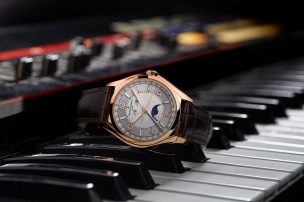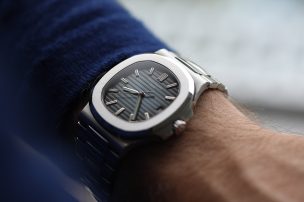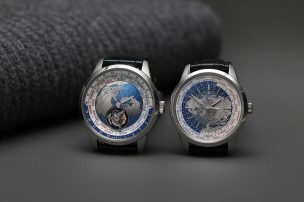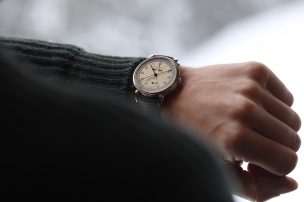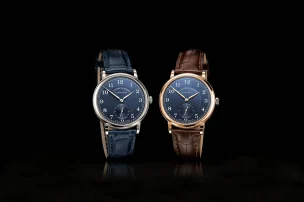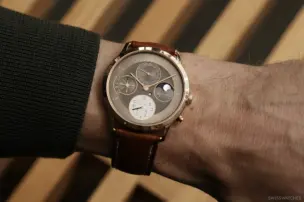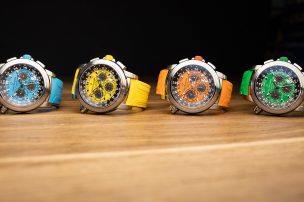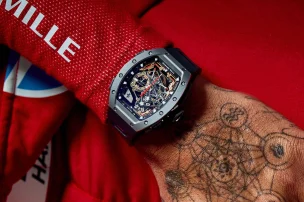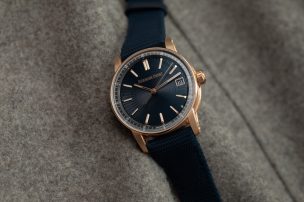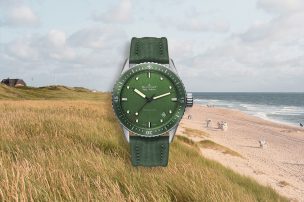
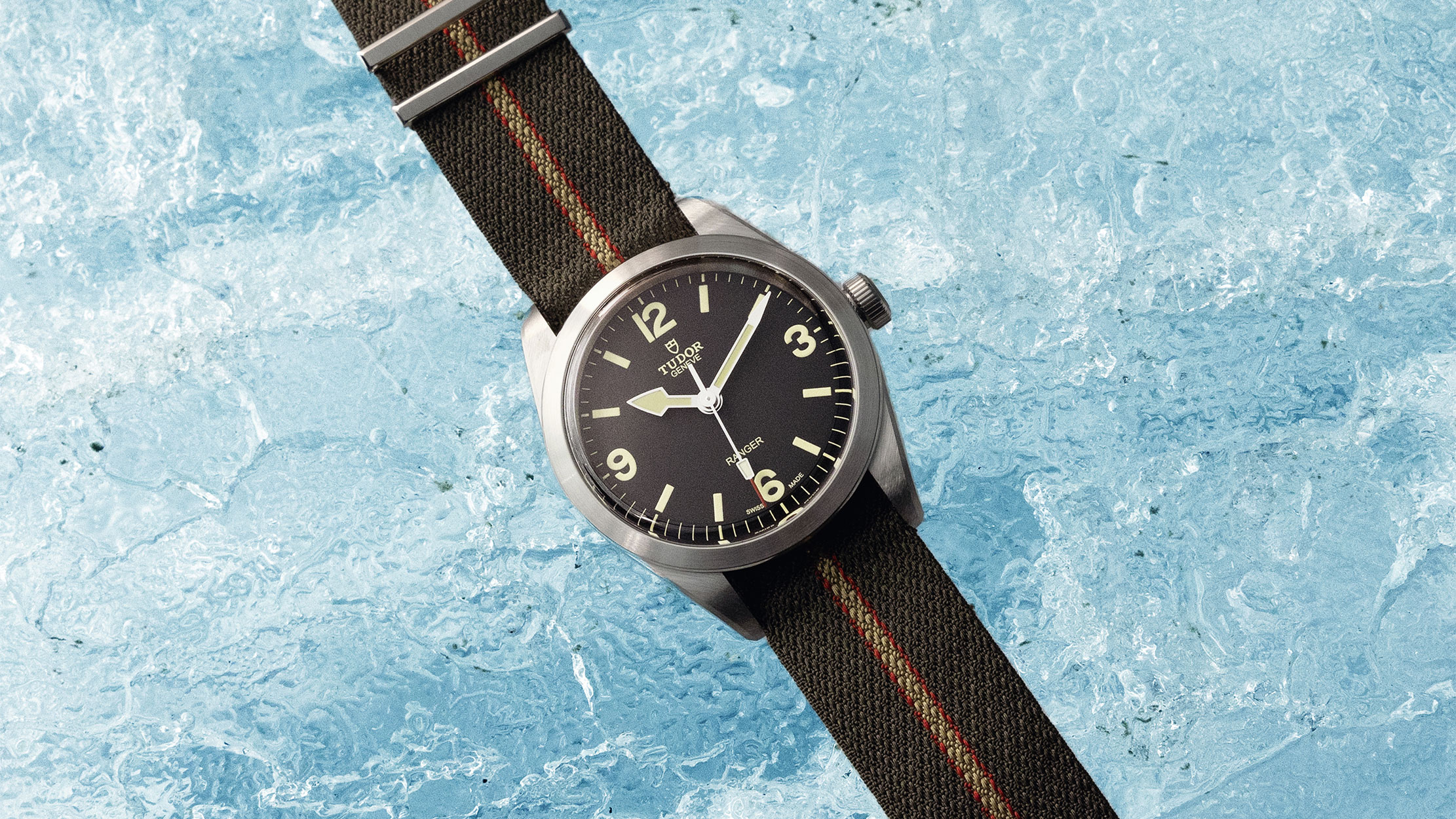
One For The History Buffs: The Adventure That Inspired The TUDOR Ranger
Swisswatches attended the launch of the new TUDOR Ranger in London back in July, and it was everything you’d hope for: ambassador David Beckham enthused about the tale behind the watch, guests drank smoothies out of ice cubes, and an Oxford scientist spoke enthusiastically about the importance of the British North Greenland Expedition. Since the launch, we’ve been digging into the archives to learn more about not only the watch, but also the historic expedition that inspired the spiritual essence of the Ranger – and now it’s time to share the story with you.

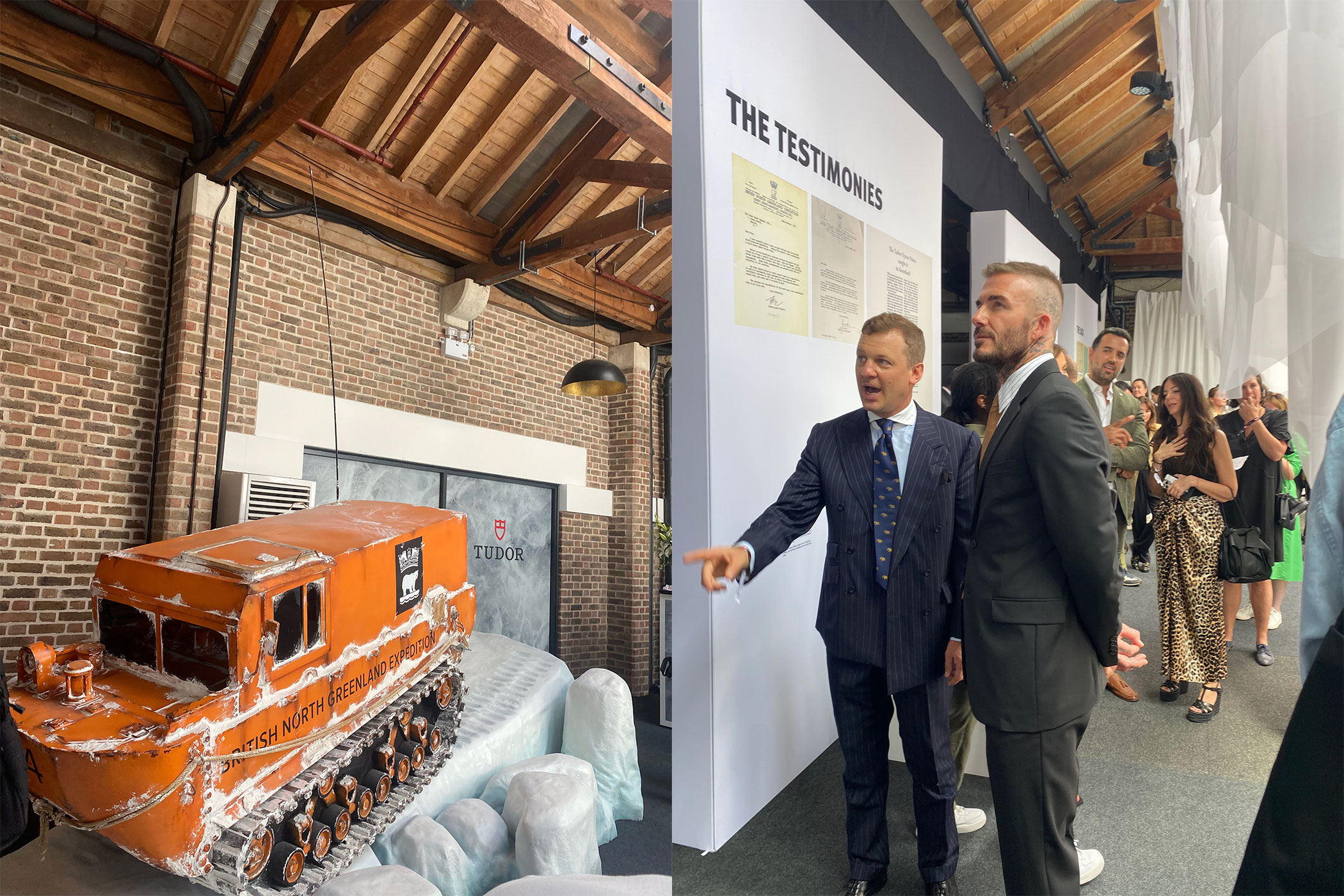
David Beckham at the launch of the Ranger back in July, 2022
Tracing the origins of the TUDOR Ranger
The TUDOR Ranger was launched to mark 70 years since the British North Greenland Expedition – yet the Ranger’s DNA dates back to long before the expedition. In fact, the manufacture’s founder, Hans Wilsdorf, first registered the name Ranger in 1929 – only three years after the brand became a registered trademark. Thus, the Ranger name has been a part of TUDOR since pretty much the beginning.

A young Hans Wilsdorf, founding father of Tudor and Rolex
Credit © Rolex.org
A complex web of Ranger references
The first three decades of the Ranger is rather convoluted. Following the registering of the Ranger, the name did not apply to a single watch model, but rather signalled if a watch was intended for adventure.
One example of this is the Ref. 279, created for the Indian market in 1943, with handy features such as legible blue hands, a small seconds subdial, and a sturdy steel tonneau case. The watch is obviously a world away from the modern-day Ranger.

The TUDOR Ref. 279 from 1943
Mid-20th century Ranger models
Here’s the next perplexing part. The new Ranger pays tribute to a watch known as the Ref. 7809. This was the TUDOR watch taken on the British North Greenland Expedition. However, no mention of the Ranger is even present on the Ref. 7809. Furthermore, from the hands to the indices, the watch does not resemble the new Ranger. This is because the new Ranger pays tribute to the Ref. 7809 spiritually, not aesthetically. Given the adventures the Ref. 7809 embarked upon (to be explained in more detail later) during the expedition, its story inspired TUDOR to create a sturdy new field watch.

The two watches have very little in common aesthetically, but rather share a spirit of adventure
1960s Ranger models
By the 1960s, the Ranger was beginning to morph into a streamlined model. A pivotal watch in the formation of the Ranger as a singular entity was the Ref. 7995 from 1965. Defining features included Arabic luminescent numerals, Oyster Prince cases, a distinctive arrow hour hand, and the name Ranger,stamped at 6 o’clock. 1960s Ranger models also offered the option of a date function with Cyclops lens at 3 o’clock – and I for one hope that TUDOR integrates this function into the next generation of Ranger models.
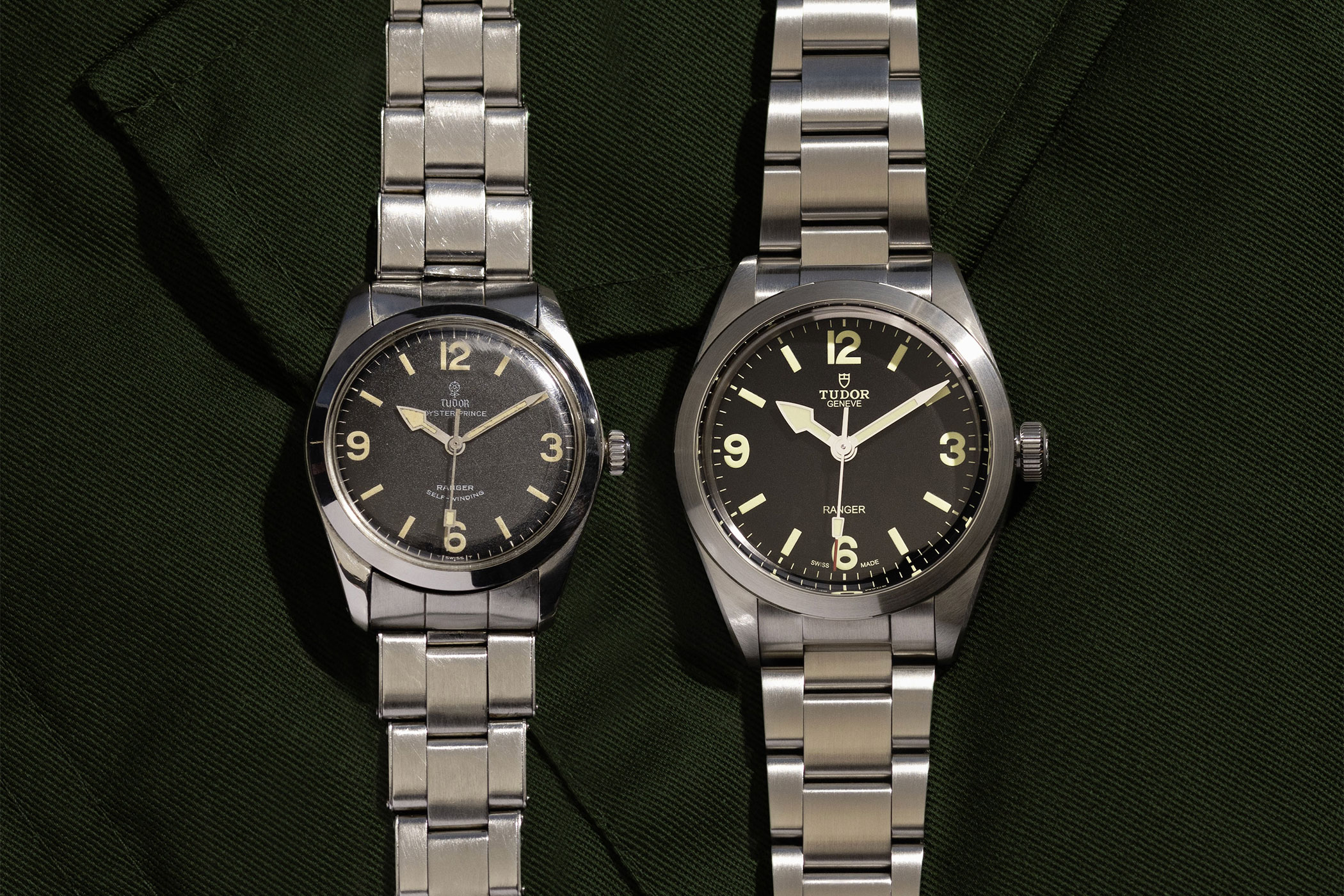
1970s Ranger models
While these formative Ranger models had black dials, models with coloured dials began to crop up in the early 1970s. One such piece was the Ranger II Ref. 9111, showcasing a blue dial, orange details, combined with an integrated bracelet and fluted bezel. TUDOR’s embrace of colour in the Ranger collection coincides with the watchmaker’s introduction of colourful chronograph dials that appeared at the time, for example the famous 1971 Montecarlo with blue and orange details.
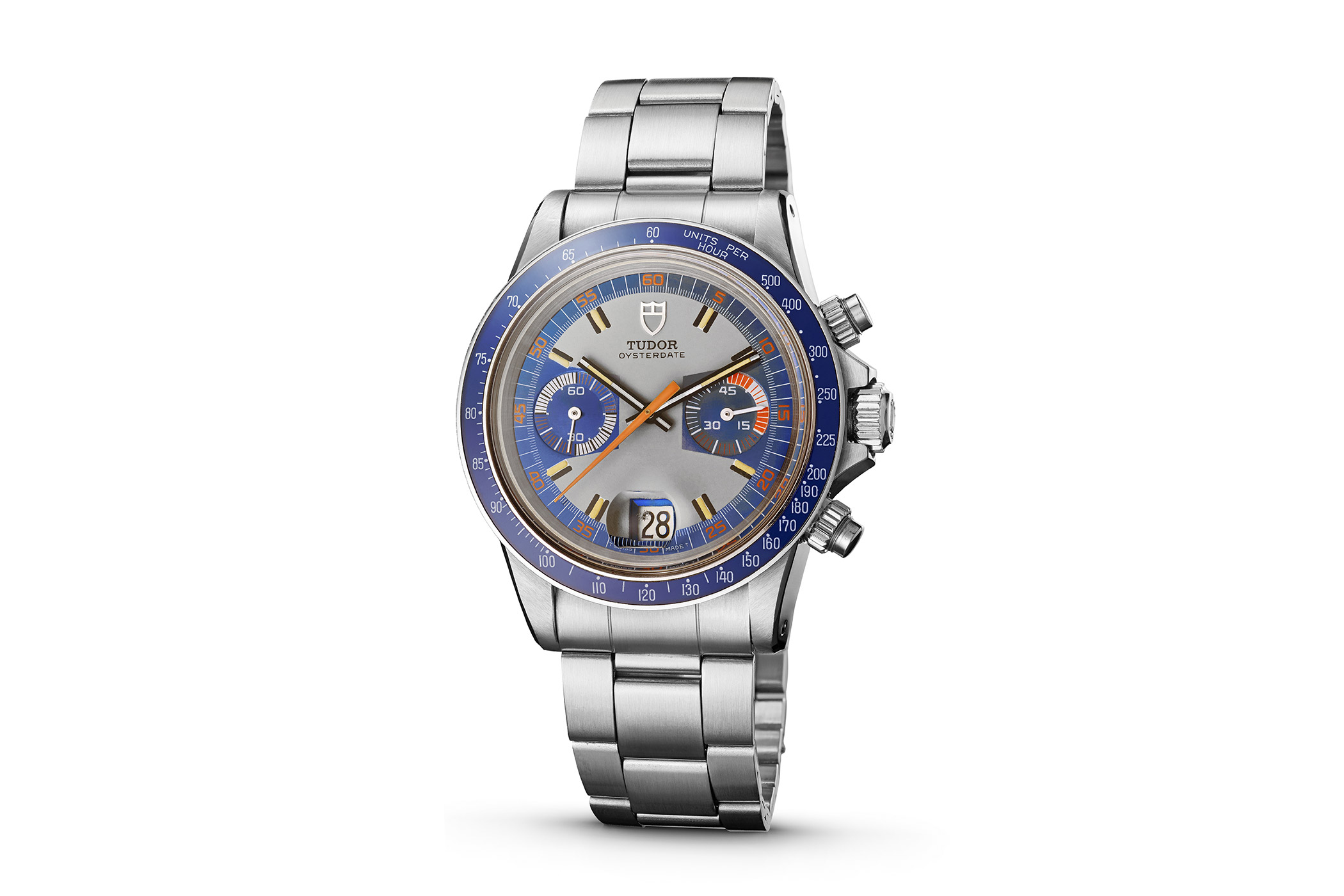
1971 Montecarlo with blue and orange details
The Ranger in the 21st century
After several decades away from the TUDOR portfolio, the Ranger name resurfaced with the launch of the Heritage Ranger in 2014 – although the word Ranger was nowhere to be found on the dial. The 41 mm Heritage model had a significantly wider dial and no bezel. This opened up the display, providing excellent legibility in combination with a simple design. While the new Ranger has a smaller case diameter of 39 mm and a satin-brushed bezel, it has certainly inherited the stripped back aesthetic and broad dial of the 2014 Heritage model.
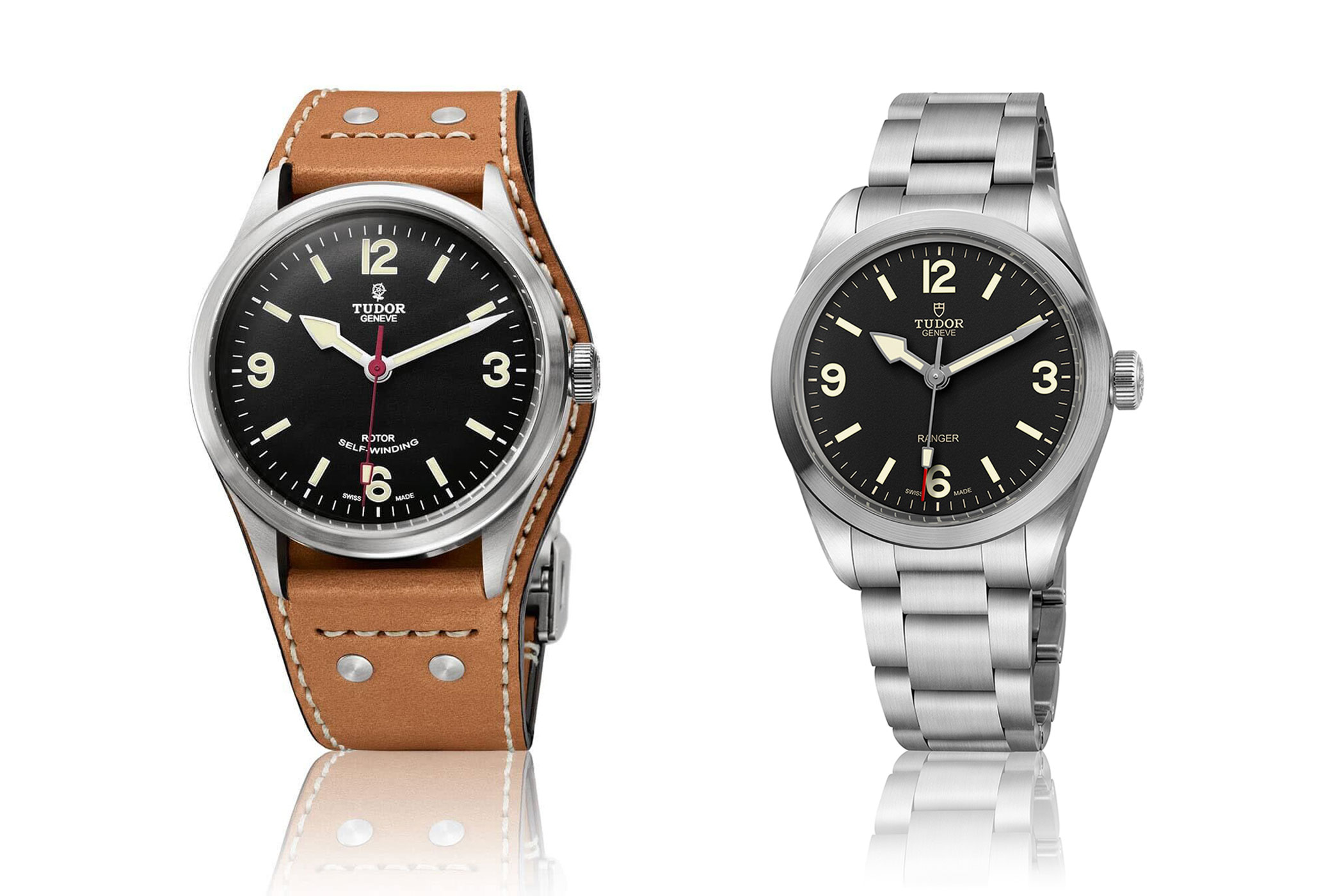
2014 Heritage Ranger model beside the 2022 Ranger
The British North Greenland Expedition
We now move from the watch-centric chronicling of the TUDOR Ranger to discovering the expedition that inspired it. Given the long, winding history the Ranger took in its journey to becoming a 21st century field watch, it’s worth delving into the relevance of the British North Greenland Expedition. TUDOR uses the expedition to capture its fans’ imaginations with its story of both horological and human resilience – thus demonstrating the advantages of having a robust and practical timepiece.
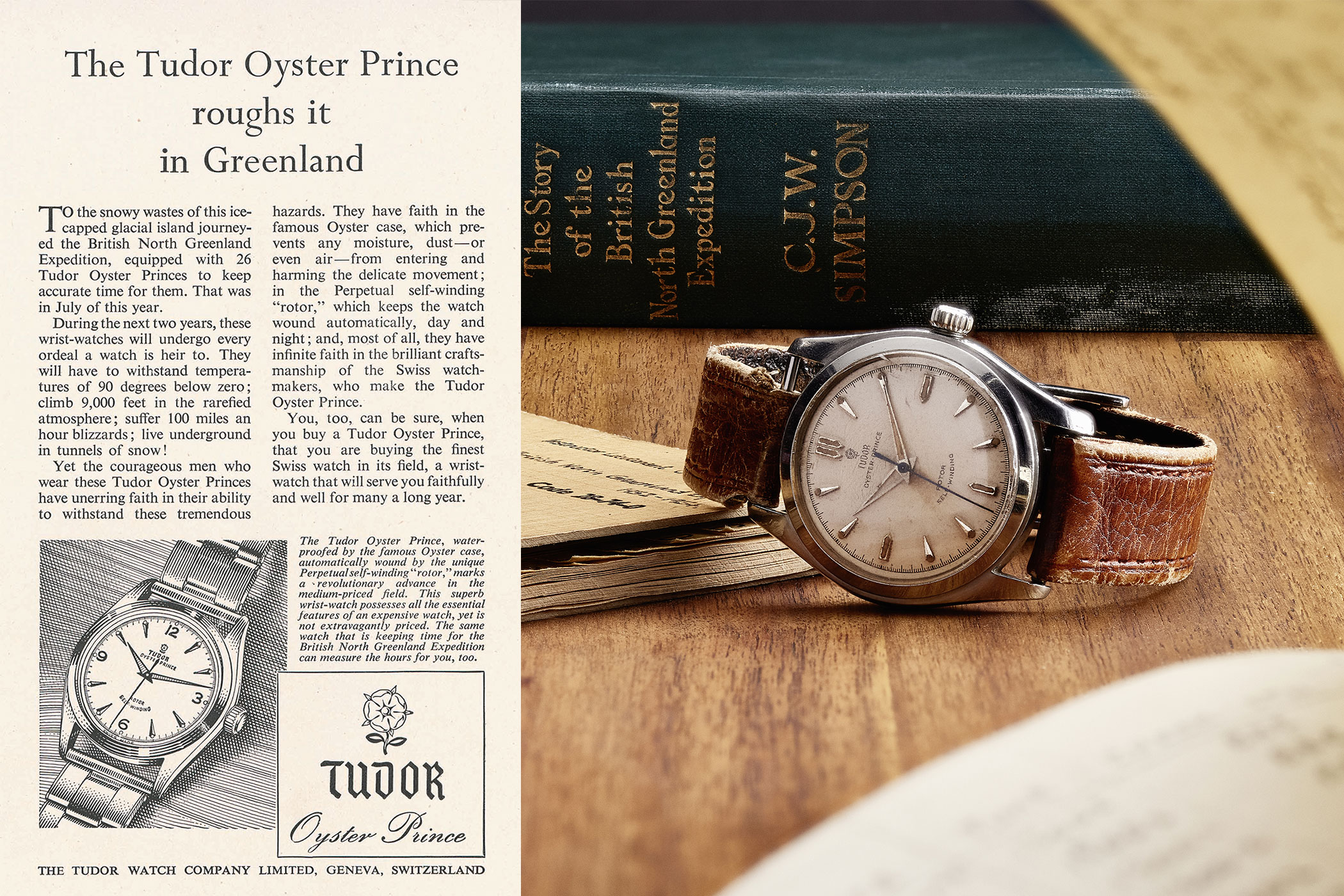
Naturally, the British North Greenland Expedition is not known best for its watches, but for the scientific progress made in post-war Great Britain. As the chief scientist R. A Hamilton reported in a review for Nature magazine in 1952, it would ‘reawaken the country’s traditional naval and scientific interest in polar exploration on a scale not seen since Scott’s [the famous Antarctic explorer] expedition.’
Although Greenland’s history is intertwined with Denmark, as well as having developed ties with the United States during the war, Great Britain had but few links to Greenland in the 1950s. The expedition marked not only the first major polar excursion to leave the country since the war, and but also one of the most ambitious and important terrestrial scientific expeditions of any kind to take place in the 20th century. Winston Churchill, still just about clinging onto power, was the vice-patron of the expedition. The Queen of England was also deeply involved, waving off the expedition a month after her coronation and meeting with the men embarking upon the adventure.

A young Queen Elizabeth II in 1952
Credit © Dorothy Wilding
A monumental moment for climate science
In 1955, a year after the expedition had come to a close, the Queen and the Duke of Edinburgh in 1955 attended a meeting to hear the leader of the British North Greenland Expedition Commander C.J.W Simpson talk about the adventure. He gave Britons their first glimpse into the conditions he had discovered in Greenland. He indicated the team’s insights into the thickness of its ice sheets and shared the meticulous temperature and weather measurements they’d made. These findings would cause an explosion of interest in the then-emerging field of climate science.
‘Greenland is about the size of western Europe; it is a sub-continent, or the world’s biggest island, whichever way you like to look at it. Nine-tenths of it is covered by ice; Greenland is in fact a gigantic basin of ice, 9000-10,000 feet thick in some parts, the centre of the ice sheet rising to about 10,000 feet above sea level and the floor of the basin we know to be at least 600 feet below sea level in some places. The ice overflows through the broken rim and forces its way down through gaps in the mountains to the coast in a series of great glaciers. Nearly all the native inhabitants are settled on the west coast, where a warm sea current takes the chill off the climate.’
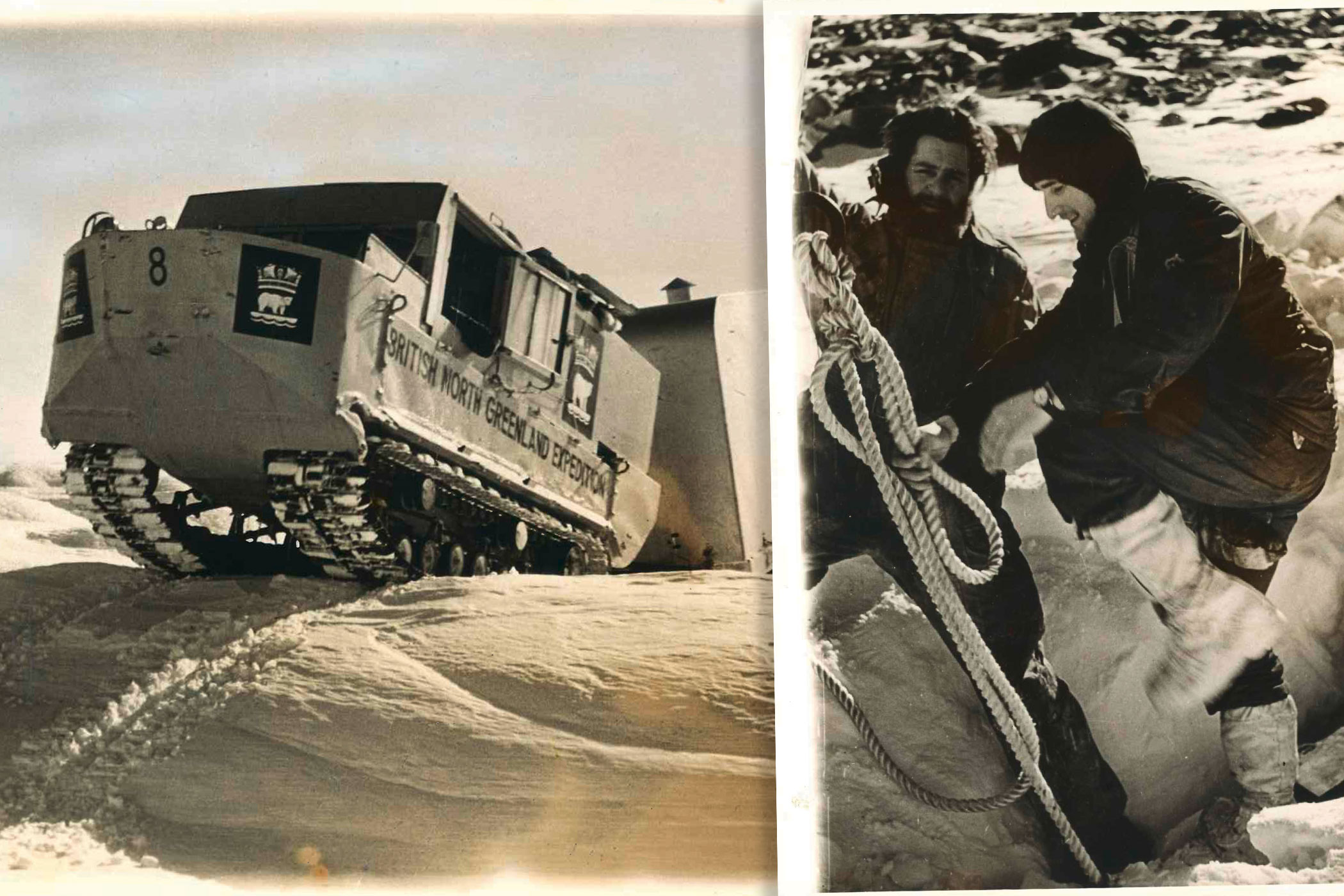
The British North Greenland expedition was based around a previously unexplored area known as Dronning Louise Land: a vast space offering nothing but ice for 700 miles. This ice, explained Commander Simpson, is in fact a gigantic glacier. ‘The north-east coast near where we were based is much less accessible,’ he explained to his audience. ‘It is guarded from the sea by a belt of pack ice which may be as much as 100 miles wide – and to force a way through the east Greenland pack is difficult and dangerous.’
Greenland is virtually an Arctic desert
Scientific goals of the expedition
Despite its clear goals, the expedition, Simpson informed his listeners, had been rather ‘rambling’. Made up of five or six different parties with varying roles and different locations, the explorers were joined together by one common thread: finding the answer to specific scientific questions. What did the northern half of Greenland consist of? What were the climatic conditions that allowed this relic of the Ice Age to exist at all? What happened to the land surface beneath its crushing weight? How does the human body adjust to these climatic conditions? How can the military operate in the Arctic, and which aircraft and vehicles can be used for polar exploration?
Pushed to the limits
Throughout their time there, the team were constantly under pressure. Aircrafts were caught in white-outs. Huskies pulling sleds died of exhaustion. Blizzards violently whirled around them. One participant fell to his death, falling down a steep snow slope. Commander Simpson also documents the sense of loneliness that could last for months on end. The scientists looked forward to the evenings, when they would go on air to share their findings via radio from across the land.
The watch inspiring the Ranger: TUDOR Oyster Prince Ref. 7909
Speaking of radios: at the request of Hans Wilsdorf, the expedition’s participants took 30 of the aforementioned Ref. 7909 watches with them, agreeing to monitor variations in precision in comparison with the hourly signals emitted by the BBC. For TUDOR, it was the greatest test – or so-called ‘trial of destruction’ – of their watches endurance in its history.
These field watches needed to withstand temperatures of almost minus 90 degrees Celsius, conquer heights up to 9,000 feet, and survive intense blizzards. Each watch was lubricated with a special artic oil, and the bracelets featured a special extension so that they could be worn over large parka jackets.
The Ref. 7909 was housed in Rolex’s reputable water-resistant Oyster case. According to Hans Wilsdorf, these TUDOR Oyster Prince models could provide ‘the most outstanding value [he had] ever seen.’
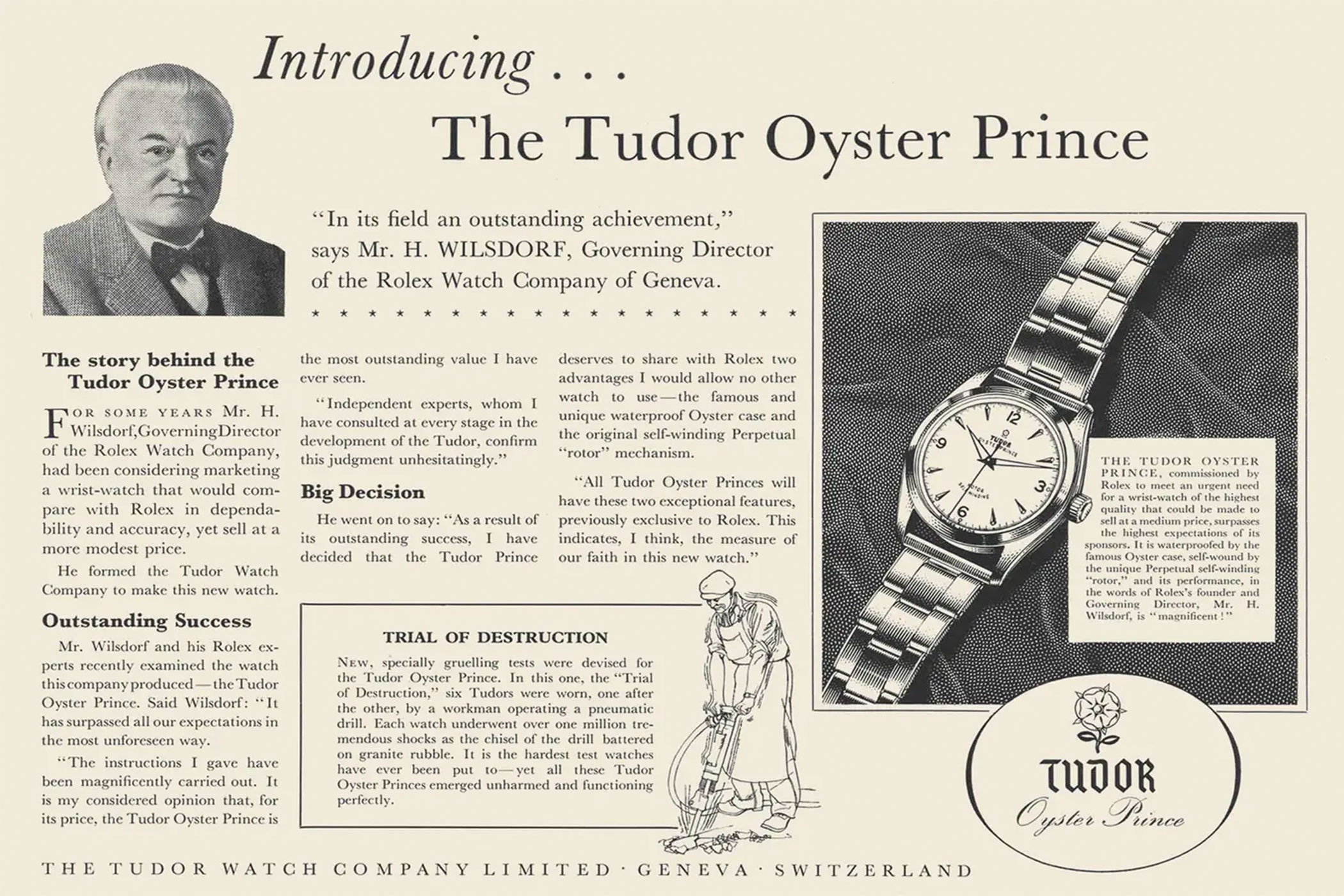
Credits © Neue Zuercher Zeitung
Given that it was intended to endure these Arctic conditions, the Ref. 7909 is a surprisingly elegant watch featuring a long, thin seconds hand and graceful arrow hands. Housed in a 34 mm steel case, it was powered by a Fabrique d´Ebauches de Fleurier movement (Cal. 390) modified by TUDOR. This self-winding ‘Auto-Prince’ 390 calibre stayed in use for many years to come, appearing in models such as TUDOR’s own Submariner models in the 1960s.
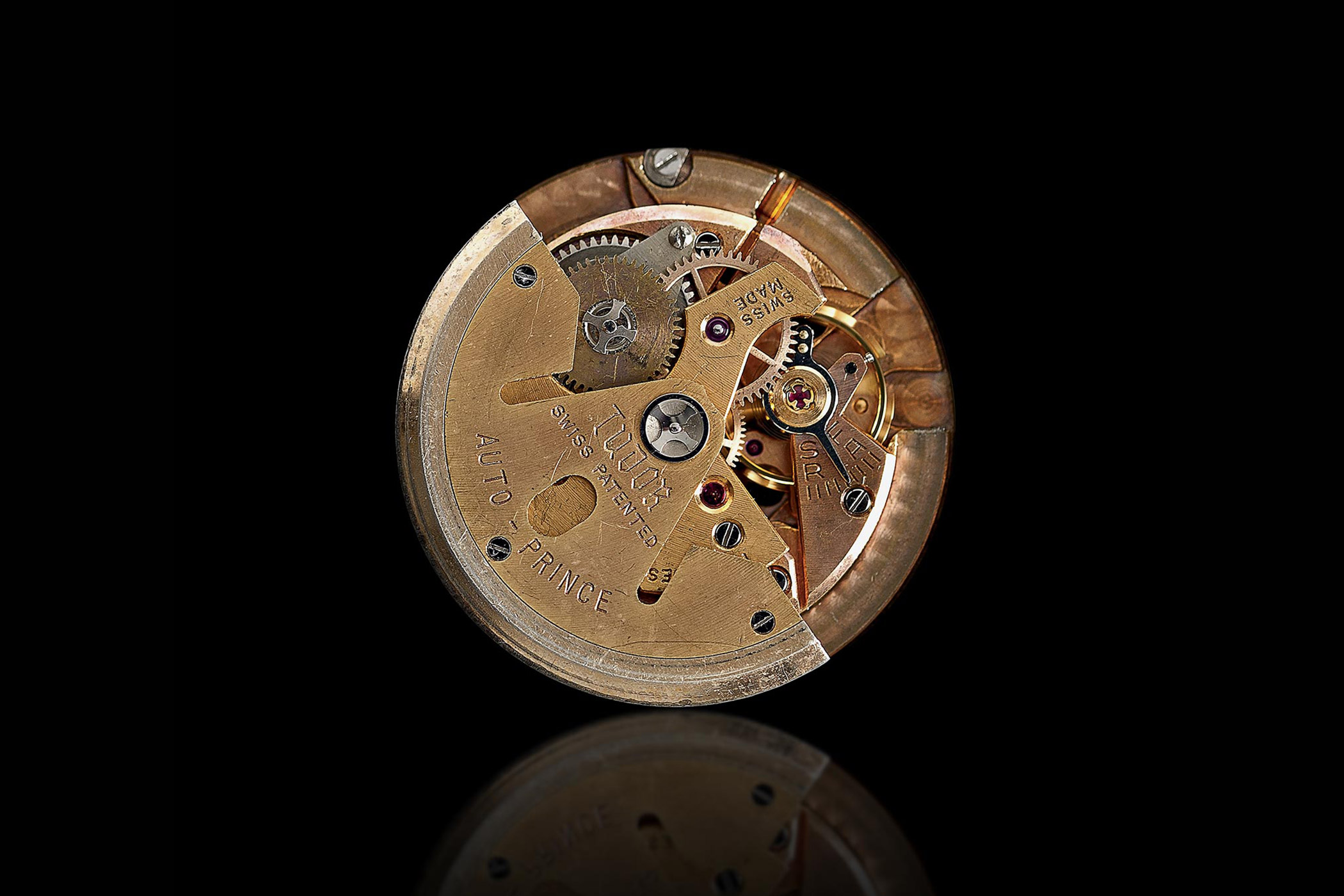
The watches performed excellently: as Captain J.D. Walker of the Royal Engineers reported:
Despite these trials, occasional time signals broadcast from England proved that my Rolex Tudor Prince watch was maintaining a remarkable accuracy. On no occasion did it require to be wound by hand. When on the ice-cap away from Base for several weeks at a time, it was of inestimable value to have on my wrist a watch whose accuracy could be depended upon at all times.
Through all of the perilous excursions undertaken in pursuit of gaining insights into some of the remotest parts of the planet, the men had TUDOR watches on their wrists. It is exactly this kind of story that always captures the imagination of watch enthusiasts – and so powerfully encapsulates TUDOR’s ‘Born to dare’ mantra.
The tale of the kitchen drawer: TUDOR Oyster Prince Ref. 7909 and Major Desmond Homard
The story doesn’t end there. As is often the case with coveted timepieces today, the 30 historic Oyster Prince watches that accompanied the men on the expedition gradually faded out of existence. Enter a certain Major (then Staff Sergeant) Desmond Homard, who attended the expedition as a mechanic, and would later become one of only 45 individuals to be awarded both the Arctic and Antarctic Cross medals.
Upon Homard’s return from the expedition, his wife adopted his Ref. 7909 for a while. While unisex watches by no means enjoyed the renaissance then that they do today, the 36 mm case certainly sat well on female wrists, too. While Homard’s wife later stopped wearing it, she mentioned the watch, which both had assumed to be lost, to her husband shortly before she died. Despite then spending years searching high and low for the watch, it wasn’t until 2014 that Homard stumbled across his Ref. 7909 in his cluttered kitchen drawer.
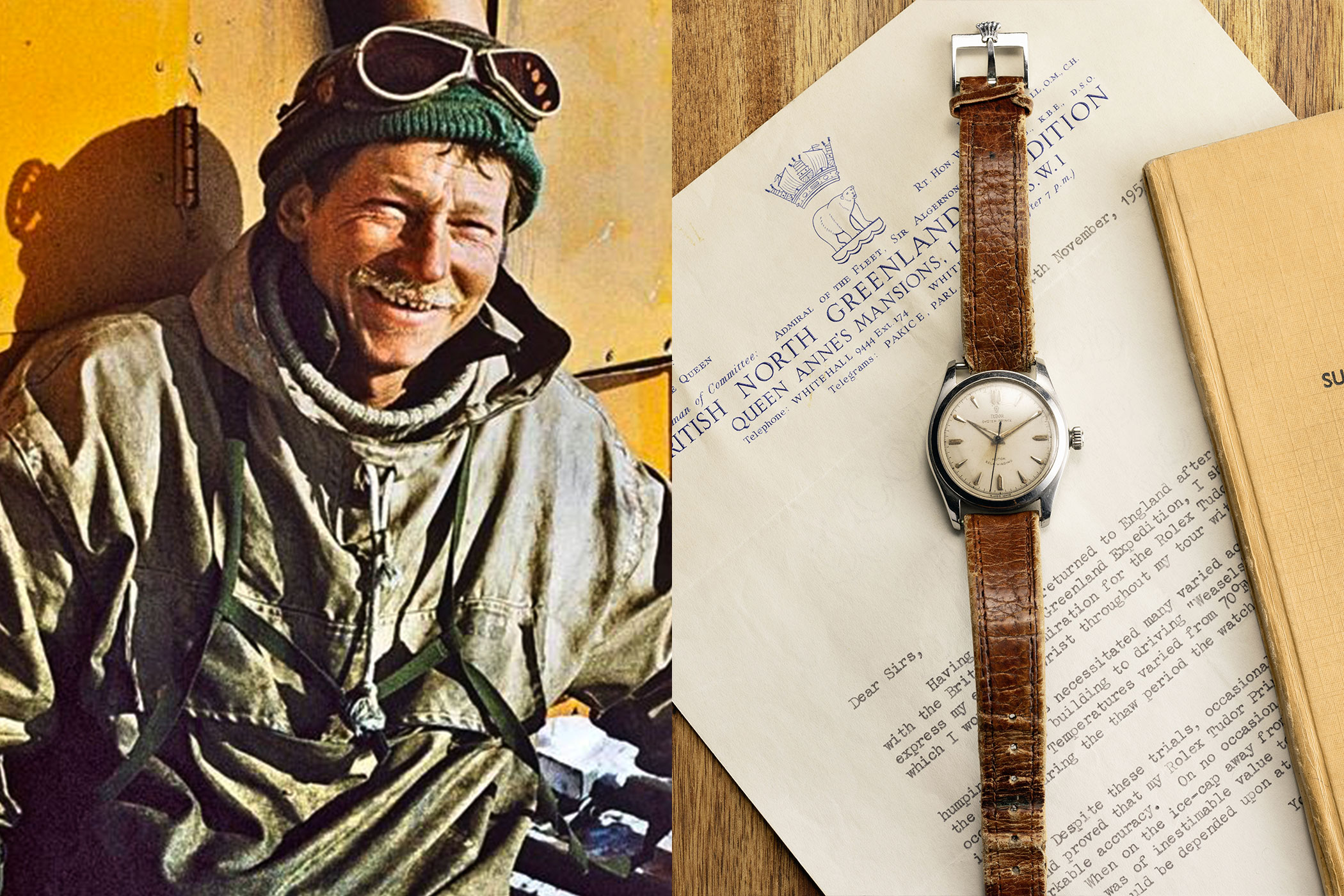
Major Homard next to his Ref. 7909
Credits © The Times UK
Before his death at the age of 94, Major Homard donated his watch to the TUDOR archives. It then consequently inspired the creation of the North Flag, launched by TUDOR in 2015, which was discontinued last year. Although known for its in-house calibre and excellent legibility, the Ranger field watch is evidently its new and hopefully more popular replacement.
The new Ranger (Ref. 79950): Facts and figures
The manufacture movement MT5402
One of the main talking points of the Ranger is that it is TUDOR’s most affordable watch equipped with a manufacture movement. First introduced in 2018, the self-winding mechanical movement MT5402, with its bidirectional rotor system, prioritises robustness, longevity, and reliability. Thanks to the integration of a variable-inertia balance, held in place by a bridge with two points of fixation, the calibre is notably precise. This fits nicely into the narrative of the North Greenland Expedition, in which adventurers praised the precision of the watch under such hostile conditions.
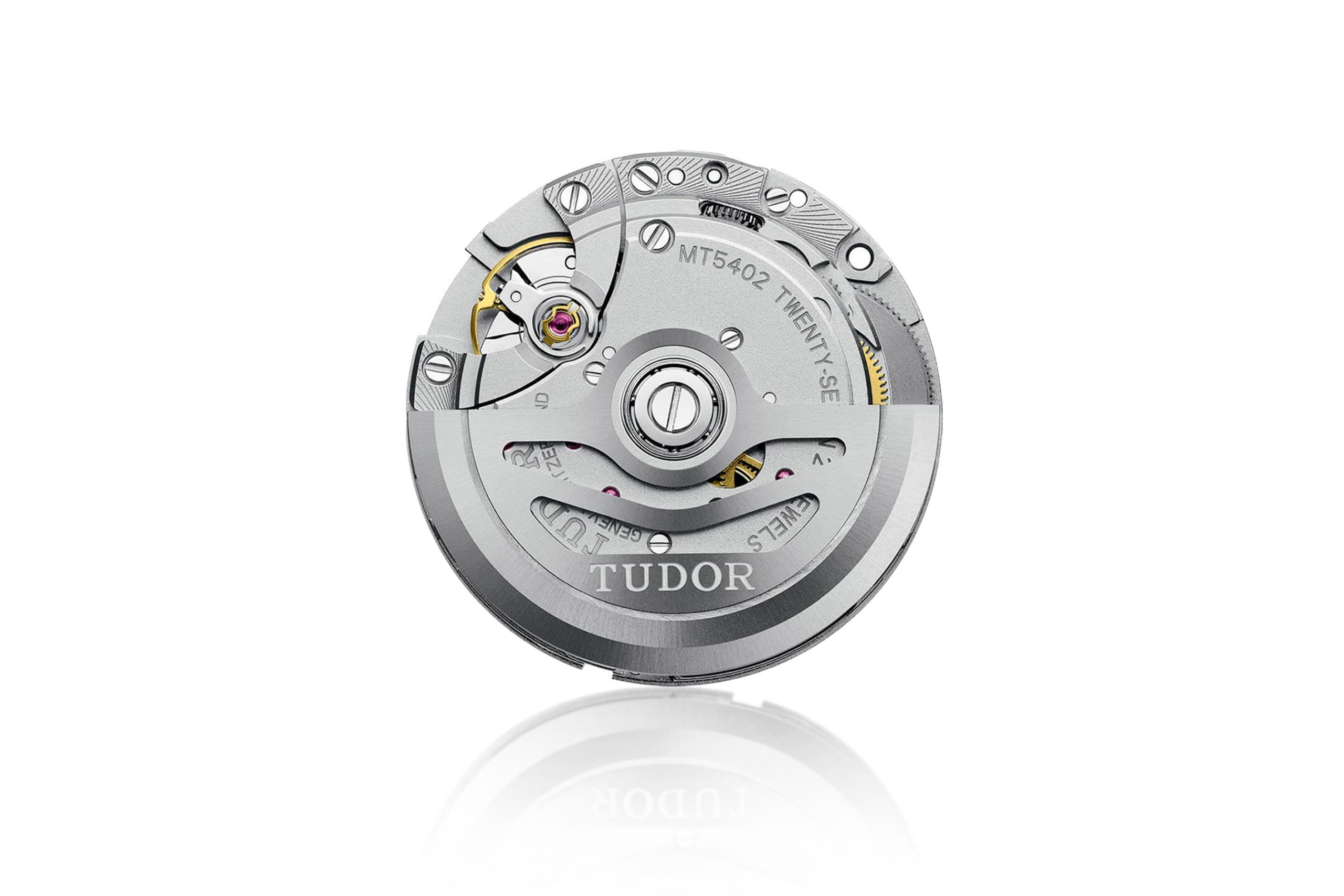
Credits © Zeitenblick AT
Also powering Black Bay 58 models, it’s a solid calibre offering a good 70-hour power reserve and beating at an equally decent frequency of 4 Hz. Returning to the aspect of precision, it’s no surprise that this movement is COSC-certified by the Official Swiss Chronometer Testing Institute (COSC). Its performance actually goes beyond the standards set by the institute. While COSC allows an average variation in the daily running of a watch between -4 and +6 seconds in relation to absolute time in a single movement, TUDOR insists on between -2- and +4 seconds’ variation in its running. Like the Ranger’s design, the MT5402 calibre is a down-to-earth yet high-performing mechanism that is typical of the manufacture.
The TUDOR bracelet
As you may remember, the 1970s Ranger II temporarily brought integrated bracelets onto the Ranger scene, however the new model follows the 2014 edition’s lead with a non-integrated steel bracelet or one of two strap options. Given how simple the modern-day Ranger is, TUDOR is placing much focus upon the fact that the three-link bracelet has a T-fit clasp equipped with a system for rapid adjustment. This micro-adjustment mechanism allows the wearer to increase or decrease the bracelet size by 8 mm.
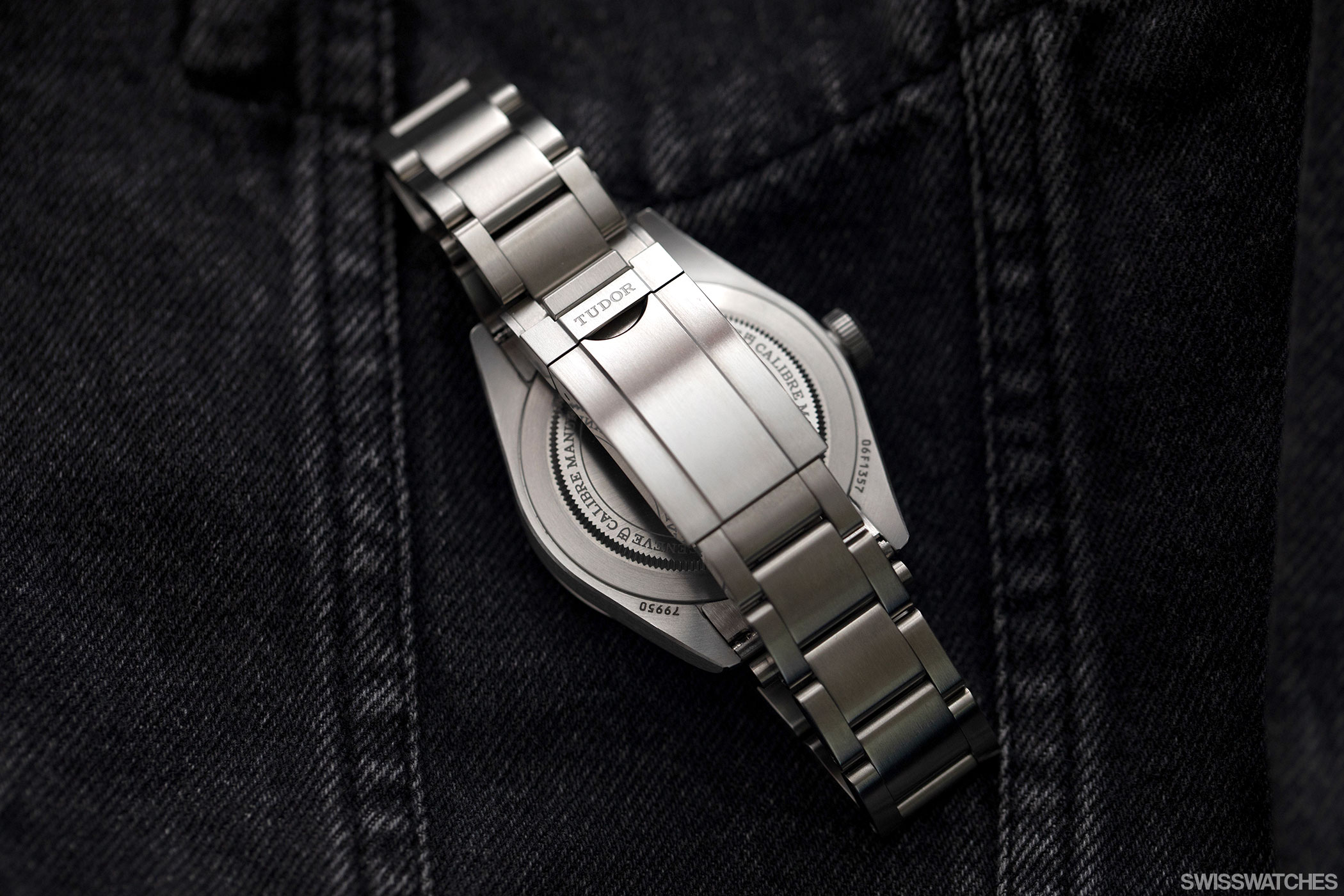
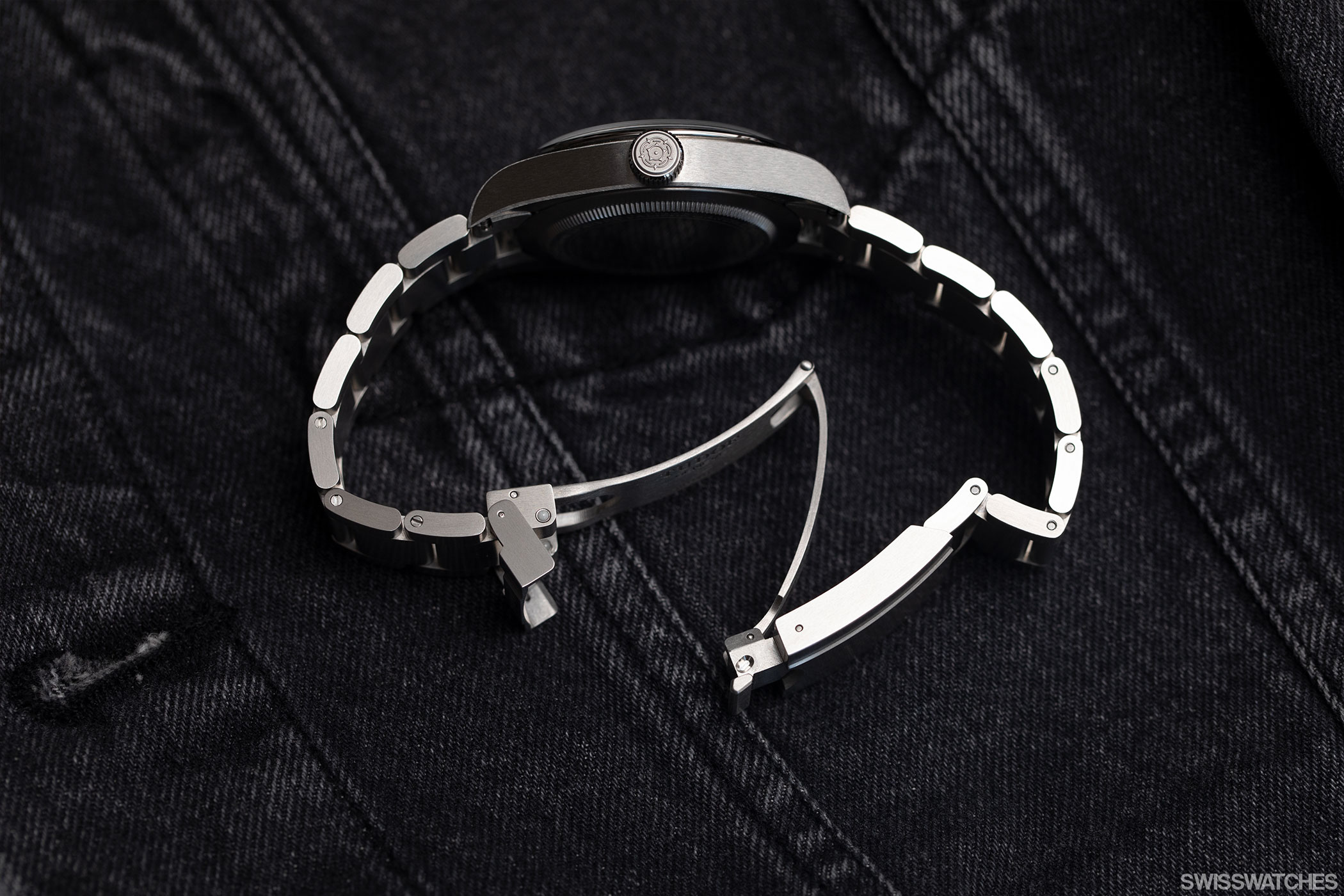
Jacquard straps
Time for another history lesson. It is a well-known fact that TUDOR uses ‘Jacquard loom’ NATO straps, but few are aware of the heritage behind them. With the first fully functioning such loom being created by Frenchman Joseph Marie Jacquard at the beginning of the 19th century, these machines significantly simplified the making of complex textiles, e.g. patterned silk. The mechanism laces together thousands of ‘punch cards’, with each row corresponding to a row of the material’s pattern.
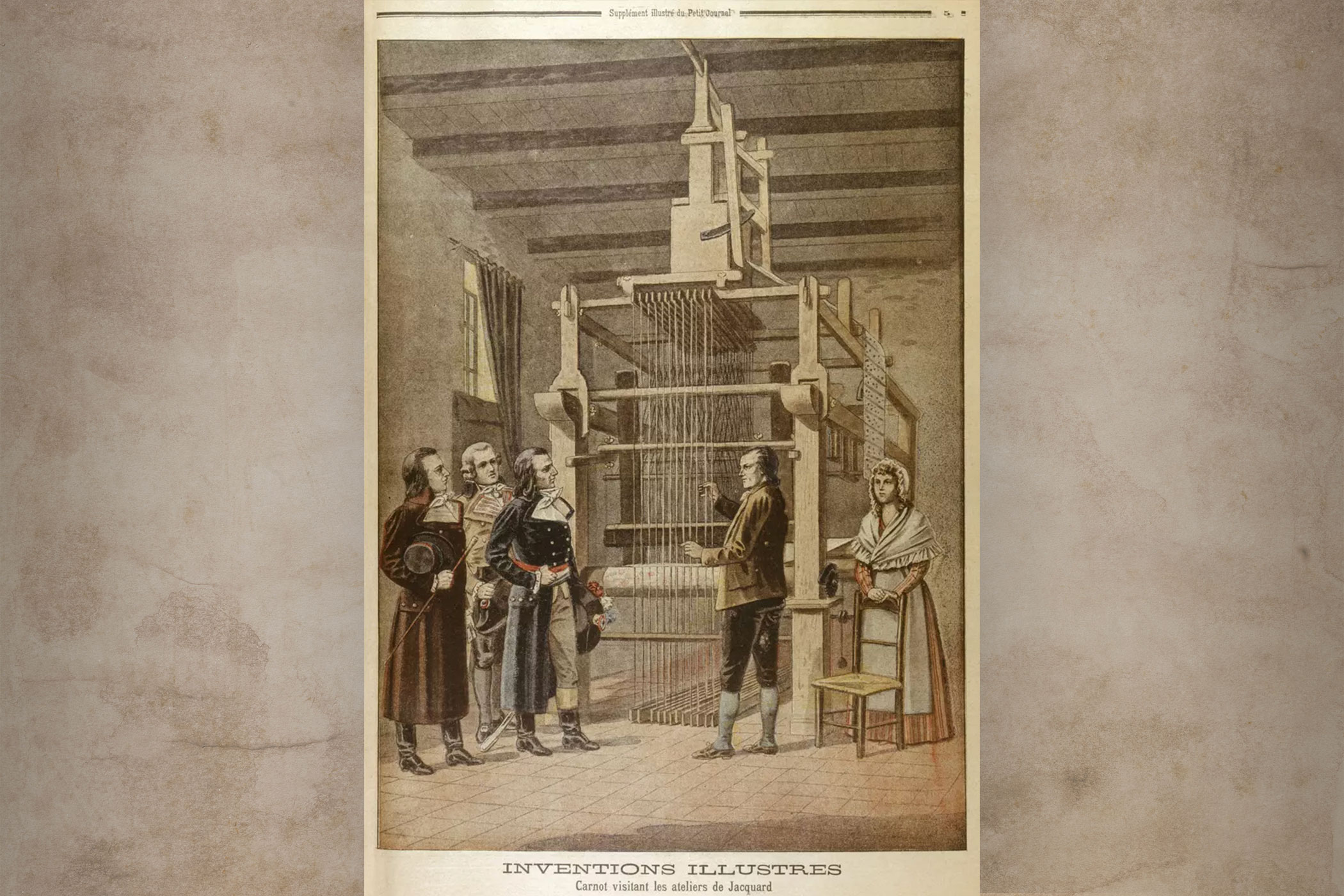
Joseph Marie Jacquard demonstrating how to use his loom
Credits © Print Collector / Hulton Archive / Getty Images
His invention allowed for ever-more complicated patterns to be created. Unskilled workers were able to quickly produce works usually made by two people in a fraction of the time. Expensive textiles resultingly lost their value, and finer materials became available to the wider public as opposed to a lucky few. Inevitably, as industrial mechanisms advanced, common usage of the looms began to wane. Today, though, Jacquard looms are a rarity.
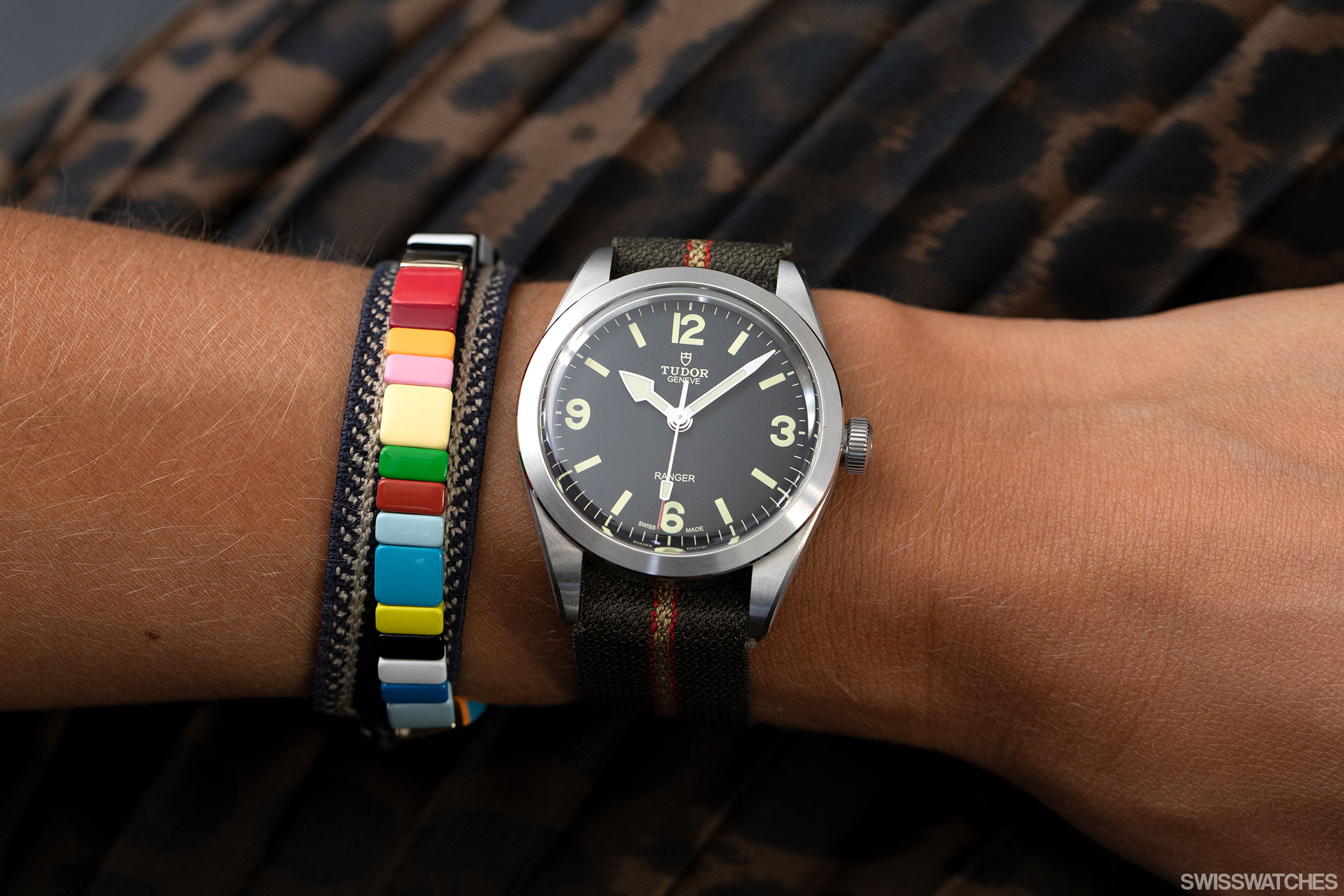
One company that does still operate them, though, is Jacquard Faure, an atelier boasting a 150-year-old history. TUDOR has worked with the company for over ten years, ever since the launch of the first TUDOR Heritage Chrono to be paired with a fabric strap. The new Ranger model offers a Jacquard Faure strap with an olive-green, red and beige colour scheme. The strap is notably rough to the touch and has a very outdoorsy look and feel. The green tone exudes a certain sense of Britishness – perhaps a deliberate nod to the British inspiration that lies behind this watch.
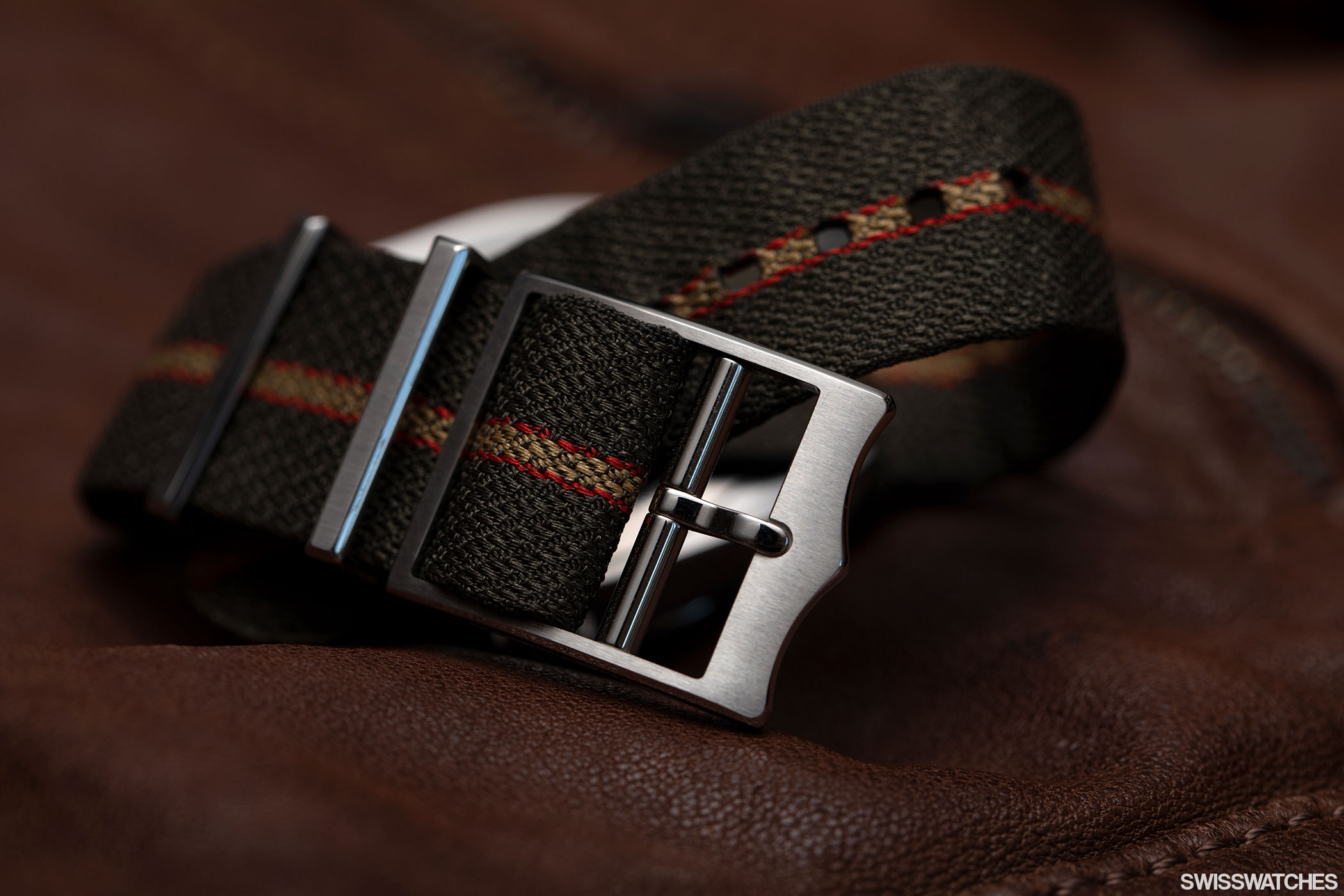
Alternatively, TUDOR offer a hybrid rubber-leather strap. Rubber straps are popular for a reason: they’re just so comfortable. The addition of leather means that the watch simultaneously still looks pretty smart and is an ideal everyday option for both the office or the weekend – after all, we can’t all be arctic explorers.
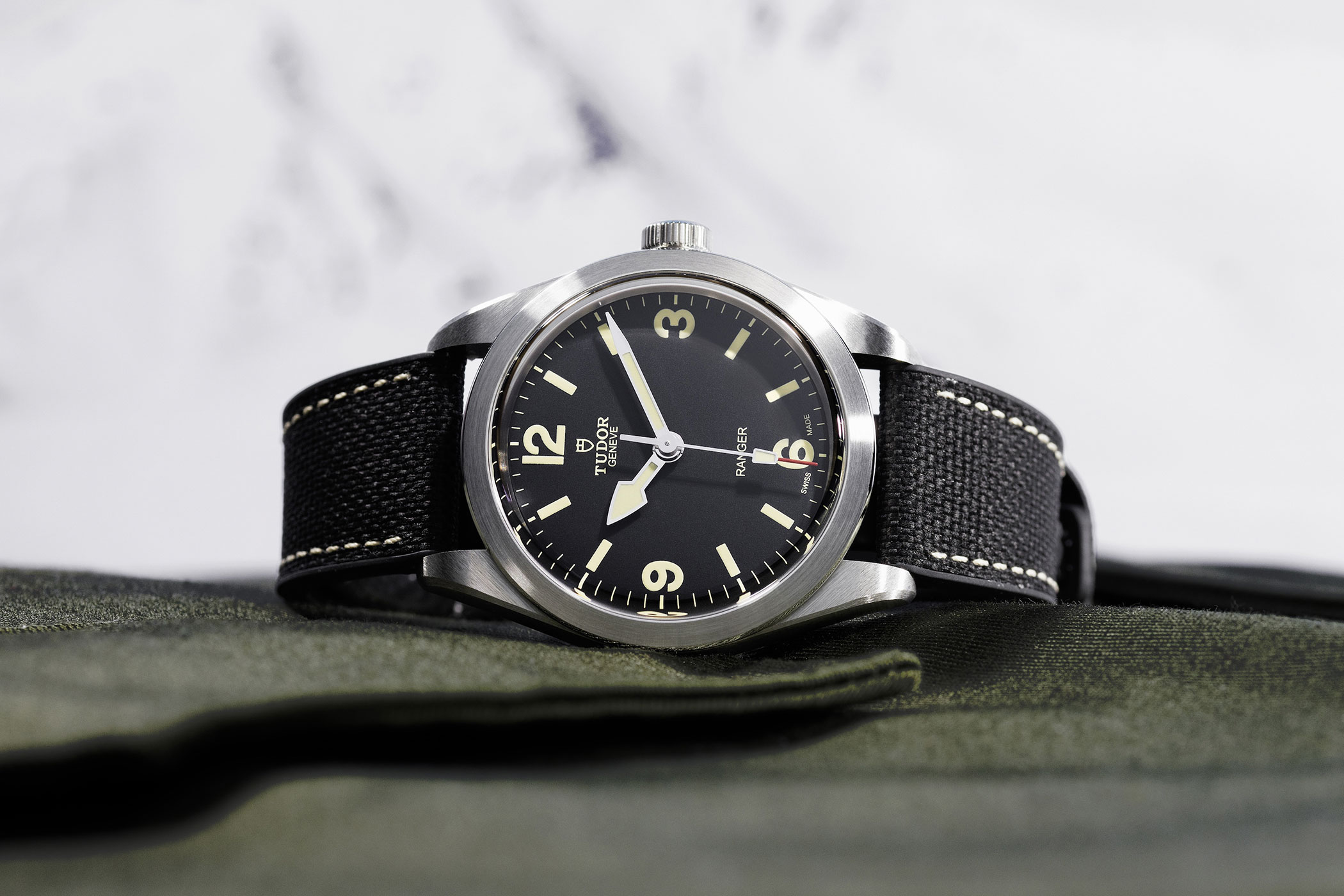
The simple steel wristwatch
The Ranger fits into what seems to me to be an emerging trend: the simple steel wristwatch. Last year, steel sports watches (particularly with blue, and eventually green dials) took central stage. This year, people appear to be stripping back even further. Watches & Wonders 2022 can provide plenty of examples; Rolex released its new-generation Air-King; TUDOR set the ball rolling with the unmistakable Black Bay Pro; Panerai gained admiration for its slick new Submersible Quarantaquattro eSteel timepieces. While admittedly white-gold not steel, even Patek Philippe simplified its famously sleek Calatrava when creating the much more pragmatic – albeit incredibly controversial – Ref. 5226G with legible Arabic numerals and thick syringe hands.
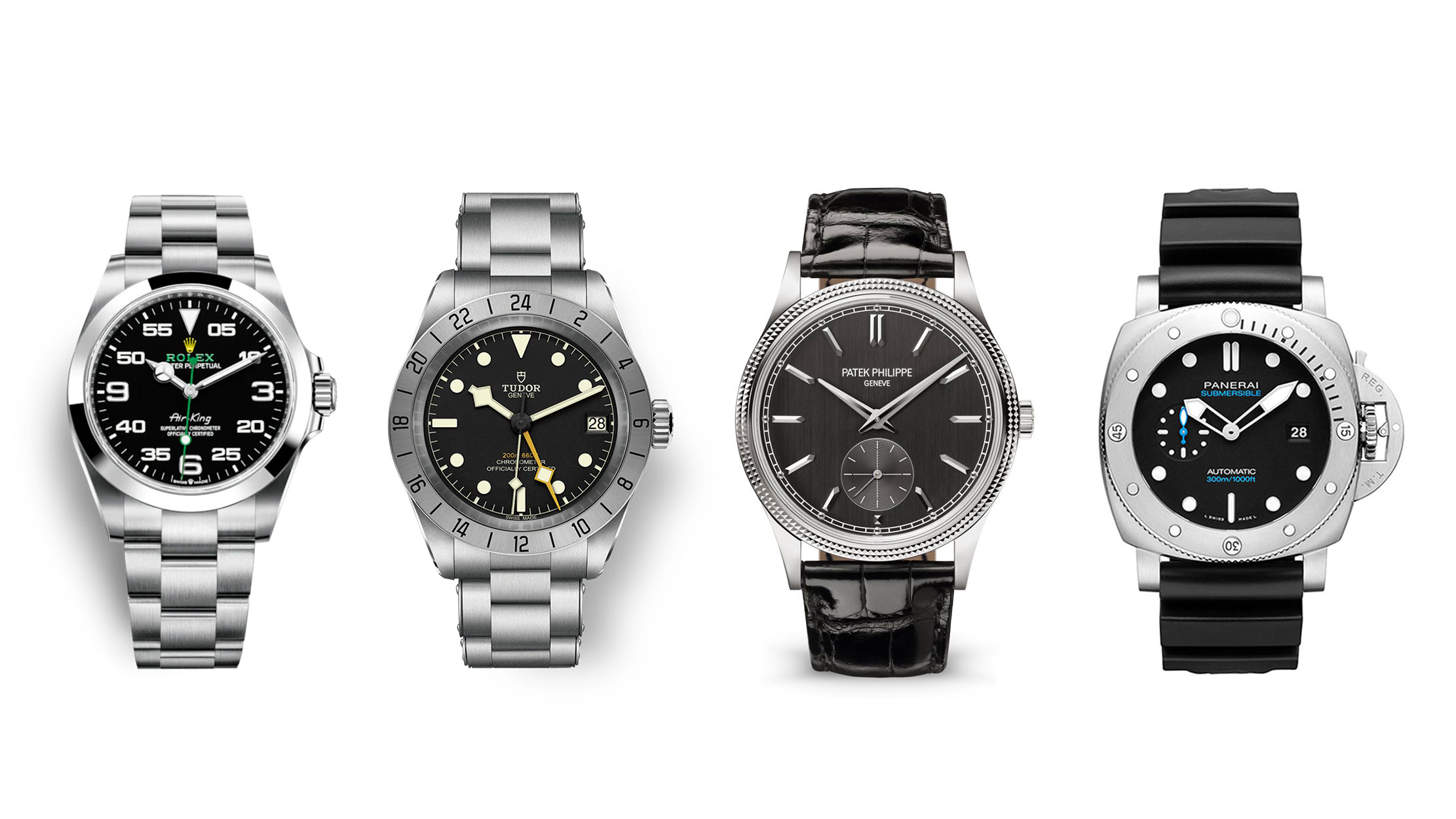
What is causing the increasing popularity of the unassuming, pragmatic wristwatch? After two years cooped up inside, are we all looking to escape our daily lives and head out on an adventure? Or, with the current climate – politically, environmentally, you name it – do we want to comfort ourselves by going right back to the basics?

Have recent events given us a new love for adventure and escapism?
Whatever the answer may be, there’s a real appeal for straightforward, utilitarian timepieces right now. A desire for performance over panache; and that’s exactly what the TUDOR Ranger offers, as the Swisswatches team found out. While unable to take the watch for a spin around the coast of Greenland, we were able to get a good feel for the Ranger on the wrist.
There’s a real appeal for straightforward, utilitarian timepieces right now. A desire for performance over panache.
Wearability of the Ranger
As a female editor, it can be a challenge to give a fair appraisal of some watches’ weights and dimensions. In the case of this timepiece, I put the Ranger to the test by staying as objective as possible. The first thing one notices about the Ranger – especially in combination with the steel bracelet – is its weight.
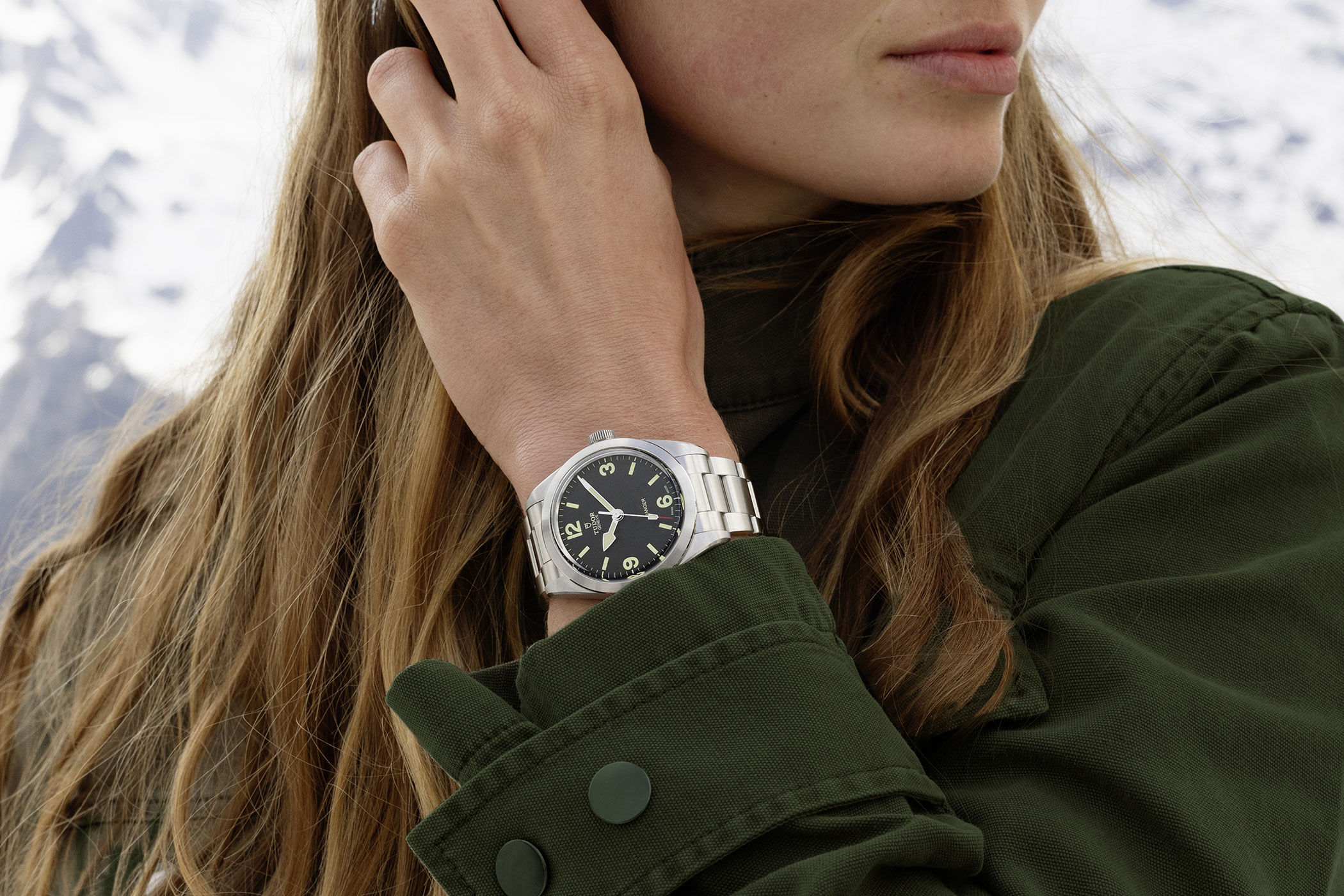
Although a field watch designed to brave harsh conditions (but more likely destined to sit in an office), it’s surprisingly heavy. The TUDOR Ranger offers only hours, minutes, and seconds, yet it weighs a hefty 147 grams (with bracelet).
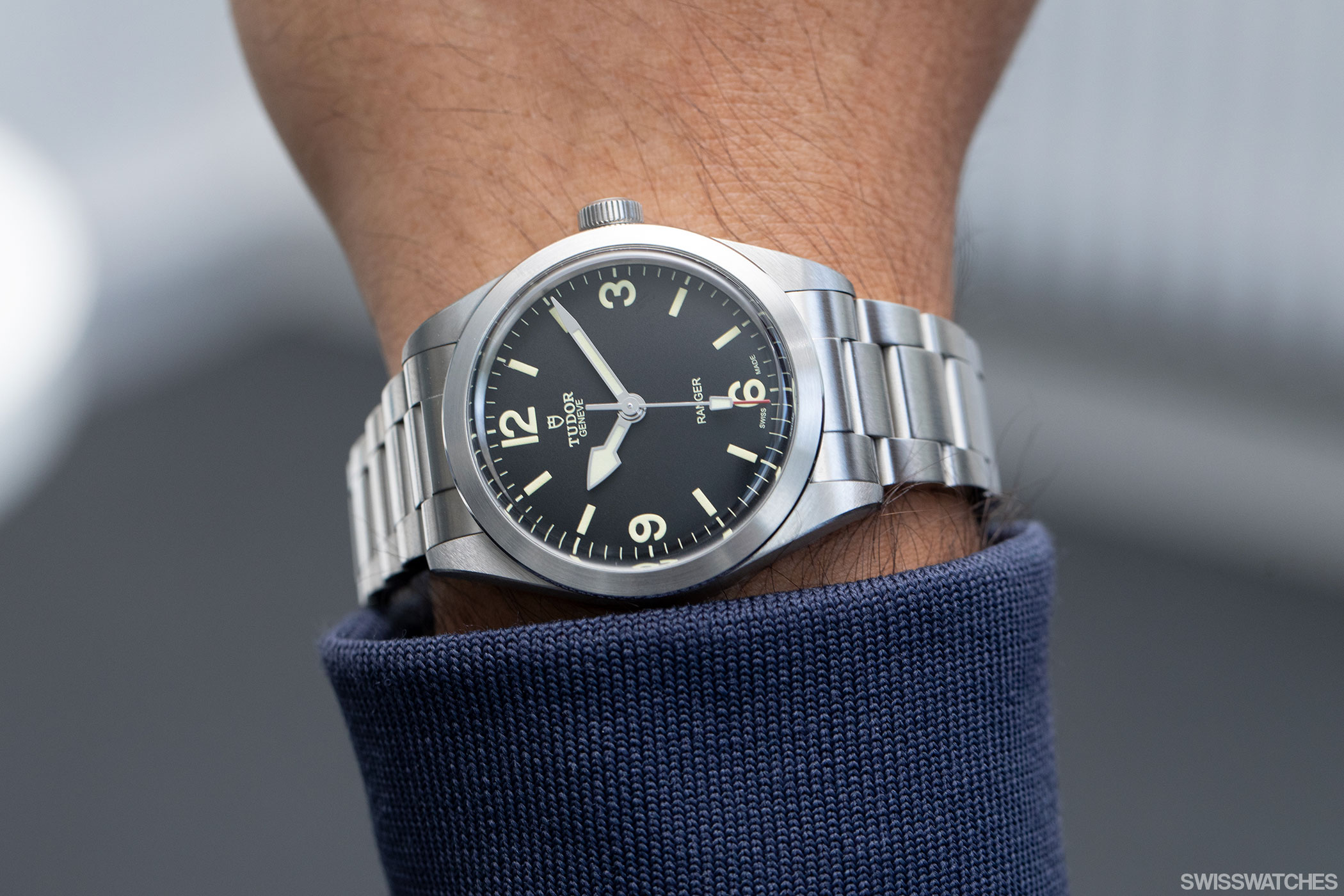
By contrast, the OMEGA Speedmaster Co-Axial Master Chronometer Chronograph with moonphase – and a larger diameter of 44.25 mm – weighs only 36 grams more than the Ranger, at 183 grams. The OMEGA watch’s calibre integrates hours, minutes, seconds, and moonphase. While the weight of watches can be a matter of taste, one does have to question why the weight of the Ranger, which is realistically an everyday watch,was not cut down.
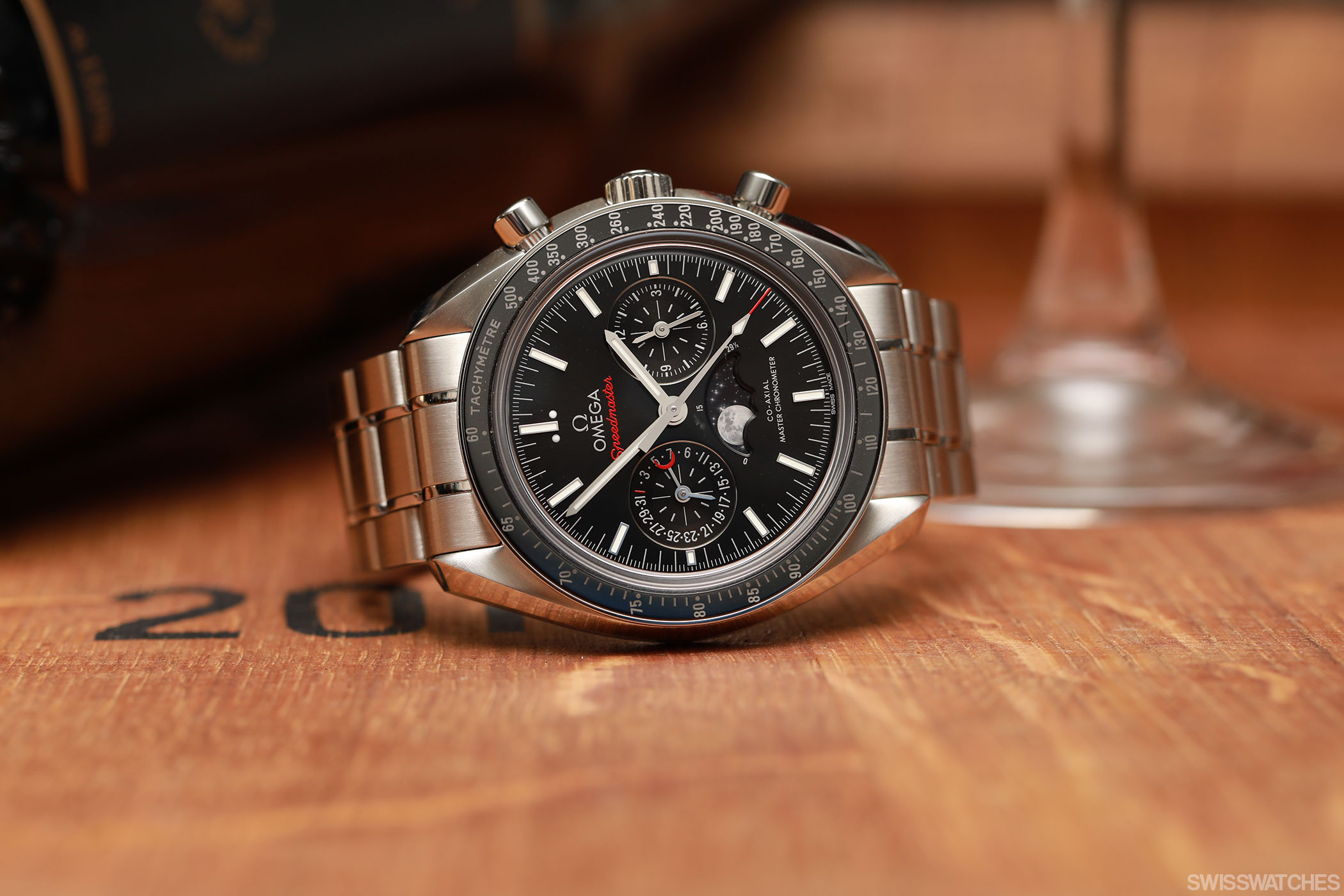
On the wrist, a slightly slimmer height than 12 mm would be preferable – and certainly doable given the straightforward calibre inside. But if the weight is proving to be an issue, the very attractive options of a rubber-leather hybrid strap or NATO strap are an easy way to solve the problem. Combining the Ranger with a NATO strap slims the watch down to a weight of 75 grams.
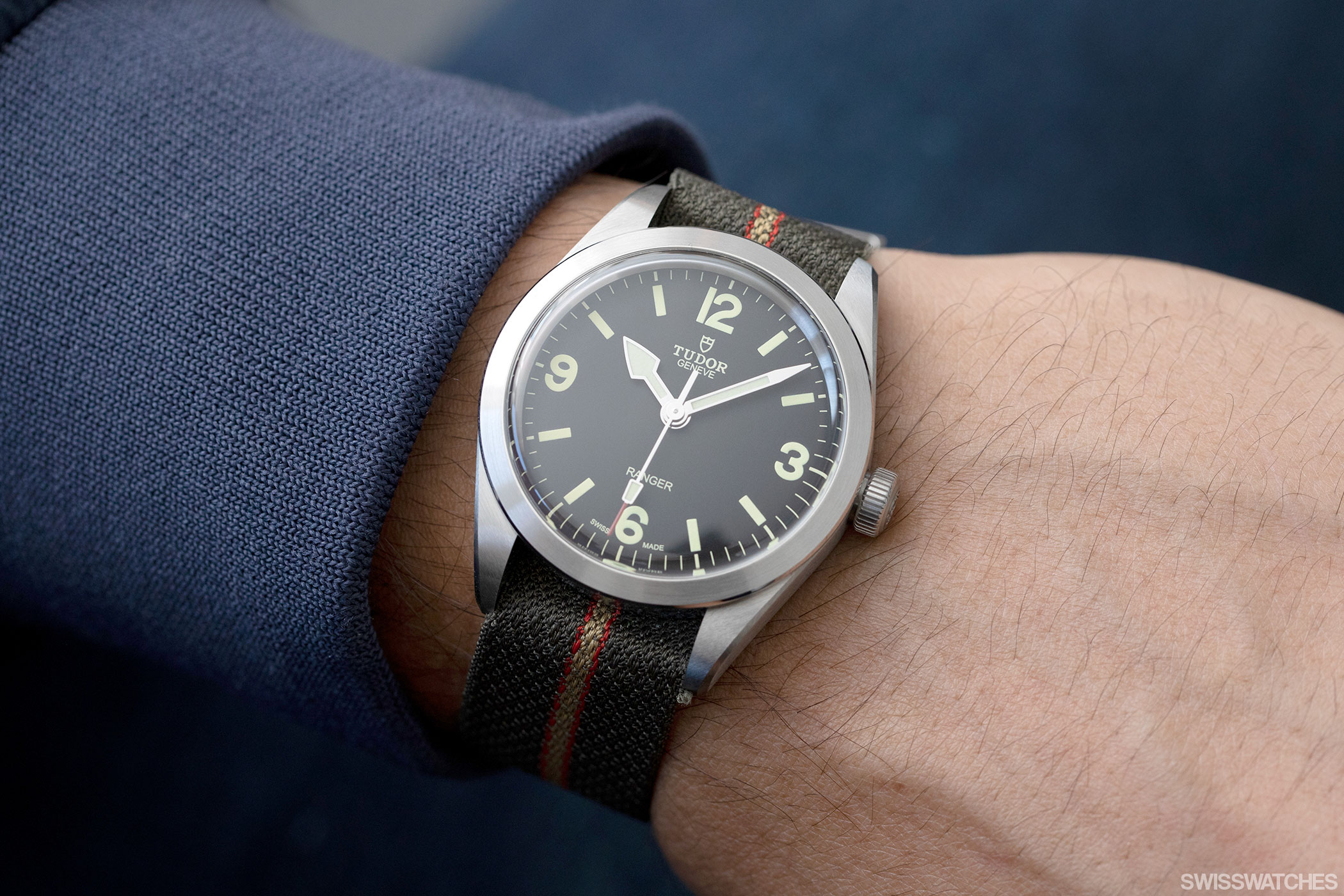
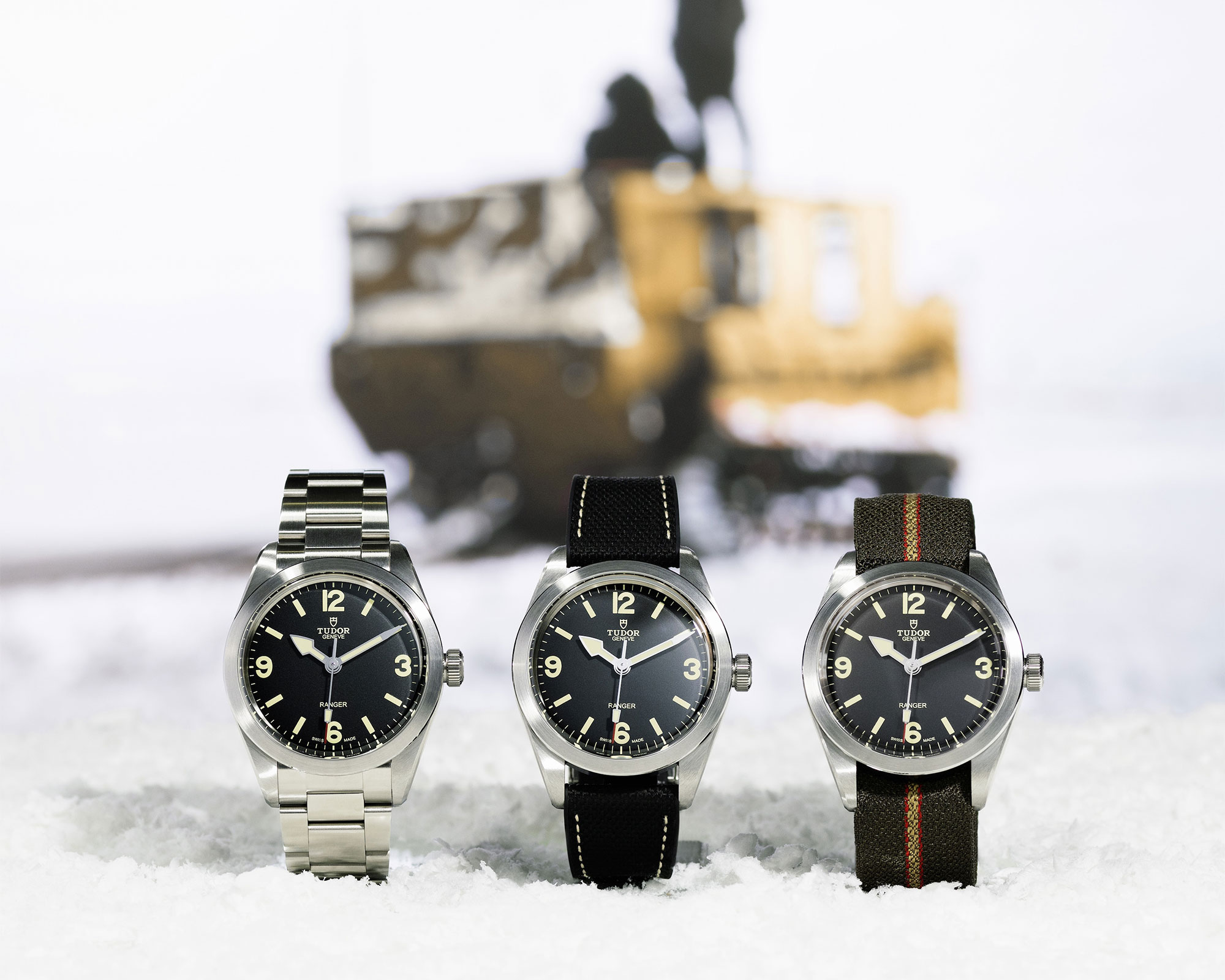
Having heard the thoughts of people from across the industry, it seems that the Ranger is not necessarily for everyone. Some watch enthusiasts, for example, want to physically see the luxury they are investing in. This might mean they want something more refined, or perhaps with more finishing on show. But that’s not what the Ranger is about. It’s about a refreshingly and unapologetically simple watch that is nevertheless well-finished and housing a high quality, extremely reliable movement. The Ranger is accompanied by an interesting, important story that successfully articulates the ideals of TUDOR: this is a horology house where watches are built for a purpose.
Price: Hybrid leather and rubber or NATO strap: 2,550 euros. Steel bracelet: 2,840 euros.

